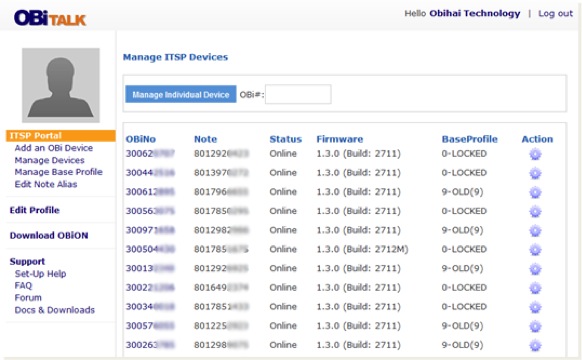The name may be new, but you’ve probably provisioned, configured or used an IP phone or ATA over the years that Obihai’s core engineering team had a hand in developing.
Back in 1999 a company called Komodo released the first ever voice ATA. The Komodo product quickly caught the attention of Cisco, the company was acquired and the Cisco ATA-186 quickly became ubiquitous in the emerging VoIP marketplace. Soon after, Jan Fandrianto and Sam Sin started a new company, Sipura, where they further evolved mass market low-cost VoIP devices and provisioning. The Sipura approach to secure, remote provisioning was quickly emulated across the industry, and Cisco acquired this business as well, after which the team further expanded the SPA product range before starting Obihai in 2010. Since that time they have been working on a new generation of voice hardware, supported by an advanced cloud management platform, and are now working to expand into global markets.
With a new company came a new opportunity — to design a voice platform from the ground up, and to innovate based on the knowledge gained over the past decade. First a new SIP stack had to be written, and Dr. Sin’s experience in writing the Komodo and Sipura SIP stacks ensured that this new stack would be feature-rich, expandable, and bullet-proof. Obihai have even used its SIP stack in its WebRTC implementation using web sockets. Next came the development of the OBiTALK cloud management platform, which is unique in that it can be utilised for HTTPS-based remote device management and provisioning in a wide variety of fashions, depending on the service provider’s infrastructure and cloud capabilities.
Customers can leverage the OBiTALK portal in a variety of ways, depending on how the OBi devices reach the end user. For example, end customers can purchase their own hardware for use via the Bring-Your-Own-Device (BYOD) service within the portal, which allows the customer to choose and sign up for IP voice services via Obihai’s “Approved Service Provider” (ASP) program. This program allows ITSPs to offer their services for provision via OBiTALK with the user selecting and purchasing the voice services, and in turn the device automatically configures for the chosen ASP. Once the ASPs services are added to the OBi device, the ASP can then check the status and change the configuration of their services on the device either via API into their own platform or via the ITSP view within the OBiTALK portal.
For ITSPs, there are a number of ways to provision and manage devices. A “Zero Touch” (ZT) approach is available, with the ITSP able to push XML-based profiles with smart adaption to the specified device. Traditional methods are available as well, including DHCP Option 66, TFTP, HTTP, and HTTPS. Profiles are sent securely to devices using HTTPS, Open SSL or by profile encryption using the OBCrypt tool. Additionally, cloud-based provisioning, configuration and management can be obtained via the OBiTALK portal. This approach allows the ITSP or their customer to purchase regular off-the-shelf Obihai devices and to add the device to the ITSP’s service by simply dialing a star code. It also allows even smaller service providers — those without a provisioning infrastructure — to offer ZT or near-ZT services to their customers. For ITSPs with a deployed provisioning infrastructure, the OBiTALK portal can be used alongside as a technical support and inventory management tool, showing all OBi devices on the ITSP’s network, their status, location and also enabling the ITSP to browse to the device’s local admin page. Additionally, all the functionality within OBiTALK can be accessed via API, allowing ITSPs to integrate the portal with their own systems. The ability to provision even extends to Obihai’s range of USB accessories, the OBiWiFI Wifi adaptor, OBiBT Bluetooth adaptor and OBiLINE FXO adaptor can all be configured by the xml profile.
Today, as evidenced by Obihai’s ATAs, and IP phones, almost anyone can securely provision and manage their devices regardless of existing infrastructure.
VoIP Week Posts:
- Ten Years of VoIP – Happy Birthday!
- #voipweek on trefor.net Brings Diverse Set of Posts
- The Conception and Birth of a New IP Handset
- UC Disappearing Like VoIP
- Microsoft Lync, Embrace or Ignore?
- Voice Fraud – You Need to Act!
- VoIP and Emergency Services – Location, Location, Location…
- Vastly Objectionable Ignominious Phrase
- A VoIP Spring
- Voice Technology Makes Conference Calls Sound Amazingly Clear and Life-like
- Net Neutrality and Telephony
- The Smoking Rooms of Net Neutrality

